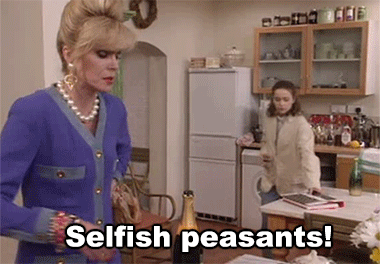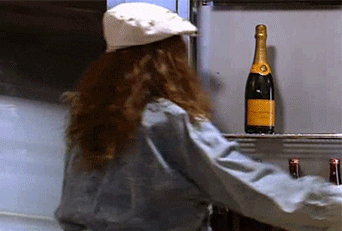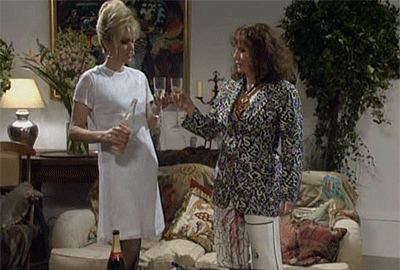Image by Molly Mendoza.
Last week over at Jezebel, Madeleine Davies contended that white people are “ruining” yet another thing via appropriation: the concept of the “basic bitch.” If her argument is right, then “A Basic Bitch’s Guide to Pairing Food and Wine” is probably the most clichéd example of what Davies is talking about. Wine snobs are the antithesis of “basic,” amirite?
But really, it's a shame that food and wine pairing isn't more accessible. Everybody should be able to enjoy wine and food in ways that are essentially unpretentious, authentic, and uncomplicated. If anything, the fun of food and wine pairing should be based on less rigid rules and social hierarchies. This is where “A Basic Bitch’s Guide to Pairing Food and Wine” comes in: even the most basic bitches can get in on the joy of pairing the right wine with the right food, whether we’re talking beans and rice, truffles, potato salad, or soufflé.
When it comes to food and wine pairings, there are those who will tell you to follow the “rules” and those who will tell you to just do what you like. One idea is based on the concept that you need to have knowledge, training, and a high degree of cultural “refinement” (read: you know how to act real rich) to enjoy wine “properly.” The other idea is based on the concept that people can pretty much tell what they like on their own without the help of “experts.” I tend to subscribe more often to the latter philosophy when it comes to wine, while also acknowledging that crafting a quality wine or creating a sublime food and wine pairing is both an art and a skill. Still, if you love eating dark chocolate with your favorite Syrah in defiance of wine snobs everywhere, then by all means, do it.
But, what should you do if you're not quite sure exactly what wines you do like? (Well, obviously, you could just stick to whiskey, but why limit yourself?) It can be intimidating to navigate the nebulous world of wine and wine people when you're first discovering your preferences. So, if you don’t know what you want to drink with your next meal, but aren’t ready to rub elbows with winos, read on for some basic tips to help you find food and wine pairings you’ll enjoy.
Try a bunch of different wines: The most important thing is to avoid doing what we all do when we find something we like, which is to drink/eat that and only that. Fine, you know you really like bold, dry reds like Malbecs or Cabs. But, girl, there are sooooooo many good wines in the world! Order the glass of wine on the menu you’ve never heard of before or buy the bottle with the label you can’t make sense of. Go with what seems most unusual to you, not what has the prettiest label/the easiest name to pronounce/the lowest price tag. You don’t have to know anything about a wine to enjoy it, so challenge yourself to try wines you know jack shit about. If you do end up liking it, then Google that shit and figure out what it is and how to get more of it.
Complement or contrast: In food and wine pairing, you can create either a complementary pairing or a contrast pairing. For example, pairing a sweet dessert wine like a Sauternes (pronounced like saw-turn) with a honey citrus tart brings out the similarly flavored notes in both the dessert and the wine. Pairing the Sauternes with a pungent cheese, such as a creamy, salty, blue Gorgonzola, works by putting two contrasting flavors together to emphasize each. Try to figure out your own complementary and contrasting pairings for the foods you enjoy.
Try regional combinations: Acidic tomato sauce pairs great with the higher acid varietal Sangiovese, the major grape in Italian Chianti. Champagne cleanses the palate when eating fatty foods like pâté or French fries. Briny Fino style sherry tastes lovely with cured foods like olives. Regions that produce wine have developed traditional food pairings to go with the wines they make in the area. You may not always know why the pairing works, but most regional pairings have endured the test of time and you should give them a try. Again, here, a little Googling can be key to figuring out what the regional pairing is for the food you’re eating or the wine you’re drinking.
Drop the attitude and experiment: As you are trying wine and food combinations, if you don’t know shit about food and wine pairing don’t be afraid to let people know that. When it comes to food and wine, a basic bitch shouldn't be ashamed of being basic. The food and wine “experts” will want to help you, but you’ll get more help if you just tell them you’re a beginner than if you pretend you know more than you do. Tell them if you don’t understand what they hell they’re talking about. If anybody treats you like an idiot, they’re an asshole and you should take your business elsewhere because they clearly just don’t get it. As you’re learning about what foods and wines go well together, set up a tasting party for yourself and some friends. Pick three foods you love and then ask your friends to each bring a different wine to taste with each dish. As you’re munching and sipping, discuss which combinations you like and dislike and why. You’ll probably disagree about some pairings, but this is part of the fun. You’re allowed to like what you like.
Look for combinations that make BOTH the wine and the food taste better: This is the most fundamental, nay basic, “rule” for food and wine pairing. The pairing shouldn’t just enhance the flavor of the food or the wine, it should enhance them both at the same time. The wine should taste better, more complex, more flavorful, and so should the food. When this is happening, you know you've found an excellent pairing! (This is, BTW, the reason dry red wines and chocolate aren’t “supposed” to be paired together: the chocolate tastes amazing, but the wine starts to taste icky and bitter and flat because of the sweetness of the chocolate. But hey, you might care more about the chocolate, and that is just fucking fine. Really.)
Cheers, Darling.
Lisa C. Knisely is Editor-in-Chief of Render, a graduate of the International Sommelier Guild’s Wine Fundamentals Course (Levels I & II), and sometimes a pretty basic bitch.
All images in this post can be found here.






